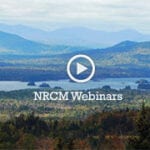Senator Woodsome, Representative Dion, and members of the Joint Standing Committee on Energy, Utilities & Technology,
My name is Dylan Voorhees and I am the Clean Energy Director for the Natural Resources Council of Maine (NRCM). Thank you for allowing us to present this testimony. We strongly oppose this legislation, which is one of the most extreme anti-wind power bills to come before the Legislature in the last decade.
NRCM has been an active participant in the development of wind power in Maine, helping craft policy and being involved in the permitting process for several individual projects. The purpose of the Maine Wind Energy Act was to foster more wind power in Maine while protecting Maine’s environment and ensuring wind development benefited our economy and local communities.
LD 1810 would significantly undermine these public purposes, including the policy of facilitating development in regions of the state less likely to have broad, landscape-level conflicts, and guiding it away from those core parts of Maine’s North Woods where such conflicts were likely. This bill would threaten both Maine’s environment and efficient economic development of renewable energy.
We believe wind power is an essential component of increasing Maine’s energy independence, reducing the harmful effects of power plant pollution, and providing economic benefits to Maine businesses, workers, and ratepayers. All energy sources, even renewable ones like wind power, have some negative impacts. If we cannot accept some of the impacts of wind power, we will likely suffer greater impacts from alternatives. However, while wind power can help protect the broader Maine environment from negative effects of climate change and air pollution, it can also unduly impact ecosystems and landscapes if not properly sited. Maine’s permitting laws must provide adequate guidance to ensure the proper balance between competing state goals of increasing renewable energy and protecting ecosystems and landscapes.
LD 1810 would eliminate a vast portion of the expedited permitting area. Because almost none of the windy places in the Unorganized Territory (UT) have underlying zoning that allows development, it would return the most of the UT to the old regime whereby developers would need to complete a challenging rezoning process at the Land Use Planning Commission (LUPC) before undergoing separate environmental permitting at the Department of Environmental Protection (DEP). In doing so, the bill would make development harder in most of the areas that were broadly deemed more appropriate for wind from a landscape-level perspective. That would be harmful to renewable energy development, which is generally positive for Maine’s economic development, energy security, and climate goals.
The second consequence of this change would be to make it equally difficult to permit wind development across most of the UT. That means a developer would have no incentive to avoid wind development along the Allagash River, for example, or deep into the remote North Woods that helps define Maine’s unique identity. Indeed, because some believe wind power should be sited far from any people, passage of this bill would likely increase pressure for developers to build infrastructure in those areas. That means this bill would also be harmful to retaining undeveloped character in key parts of the North Woods.
Finally, the bill makes an extreme change to the balanced approach to visual impact analysis developed previously. NRCM has previously stated that it would not be unreasonable to make a minor adjustment to the eight-mile distance in which to consider scenic impacts, i.e., adding a few miles. However there is no justification for the radical change proposed in this bill. It would add substantial burden and difficulty into the permitting process and upset the balance we need with regard to wind energy siting.
Additional Background
Because many members of this committee may be unfamiliar with Maine’s wind laws, our testimony includes some background on the issue and current statutory context. There is a lot of rhetoric around wind power and our wind energy policy, but the following is the list of the changes in law the Act actually made:
The Wind Energy Act:
- Made wind power an allowed use in one-third of the Unorganized Territory (UT); wind power projects otherwise would have required rezoning. Although it didn’t change the underlying zoning districts, it overlaid wind as an allowable use in the so-called expedited area. Rezoning for major development in the UT is an intensive and time consuming process. In addition, leaving two-thirds of the UT—the core of Maine’s North Woods—outside the “expedited permitting area” helps guide development away from the most remote areas so essential to Maine’s character.
- Changed the standard for evaluating impacts on scenic resources and related uses to one more specifically tailored to wind development. To give developers and others more certainty in the permitting process, this included a long list of specific scenic resources of statewide significance whose impacts should be considered, and a geographic scope of scenic impact analysis of eight miles from a proposed project.
- Limited the role of the Board of Environmental Protection (BEP) to appeals of Department permitting decisions, and expediting appeals of BEP decisions directly to the Law Court.
- Set specific, ambitious goals for wind development in Maine. These non-binding goals were based on an analysis of Maine’s wind power potential and our goals for reducing greenhouse gas emissions.
- Required wind development to provide tangible benefits to host communities, which was further specified as a minimum of $4000/year/turbine in excess of property taxes through a community benefits package that could include a variety of uses.
- Made a variety of more minor changes to make the permitting process more consistent across wind projects, such as ensuring adequate noise standards apply even to non-Site Law projects or listing the requirements for permit applications.
Finally, we note that in 2015, the Legislature passed a bill that created a process to remove specific areas from the expedited permitting area. That bill resulted in several petitions to the Land Use Planning Commission, some of which were granted and some of which were denied. Not only was the bill carefully drafted and negotiated—at great length I can personally assure you—between parties, but it resulted in a process where zoning-type decisions could be made by an agency in possession of all the necessary facts and in a non-politicized context.
We urge the committee to reject this extreme piece of legislation.
Thank you.









